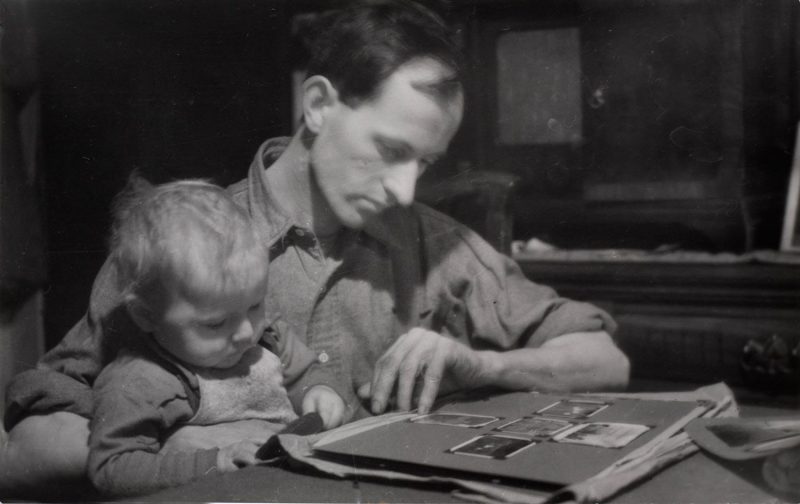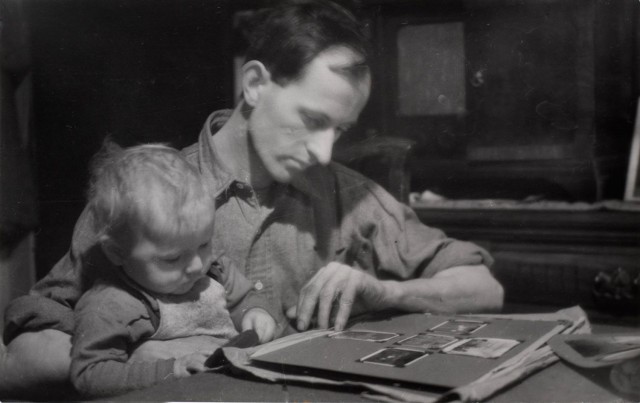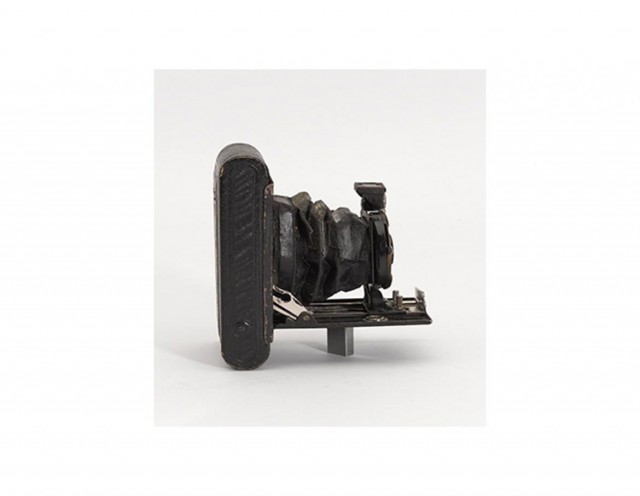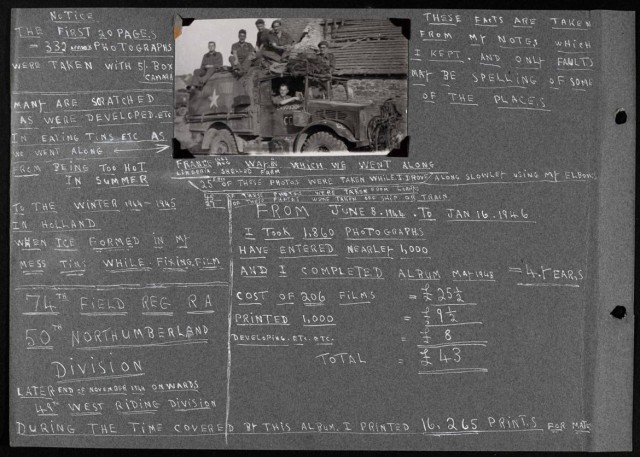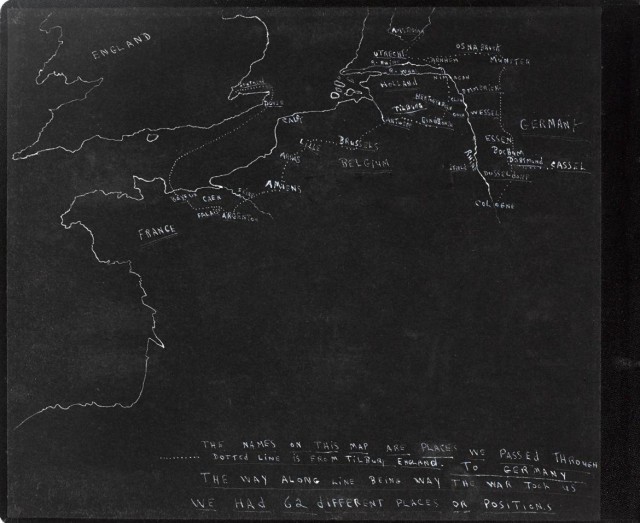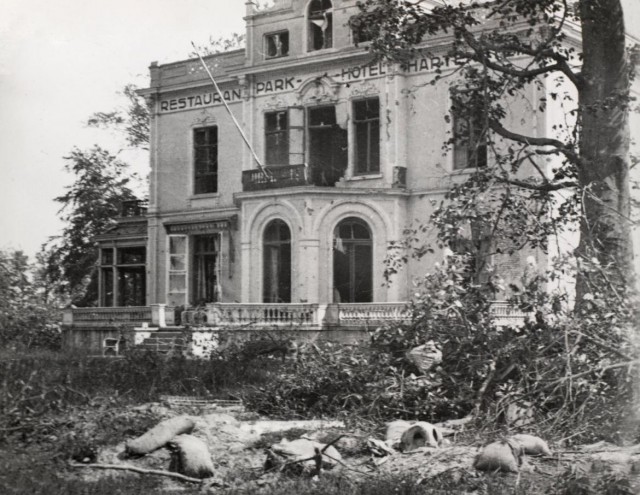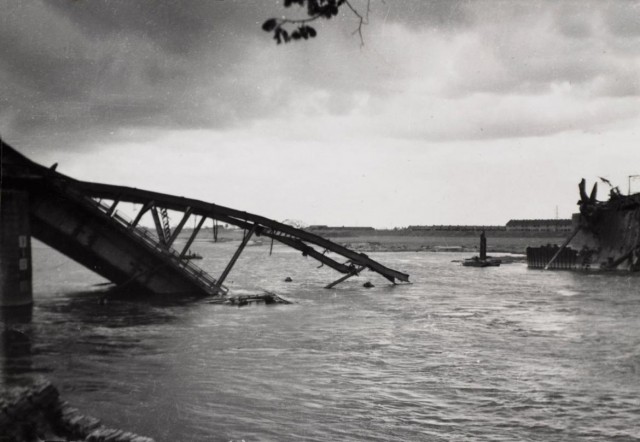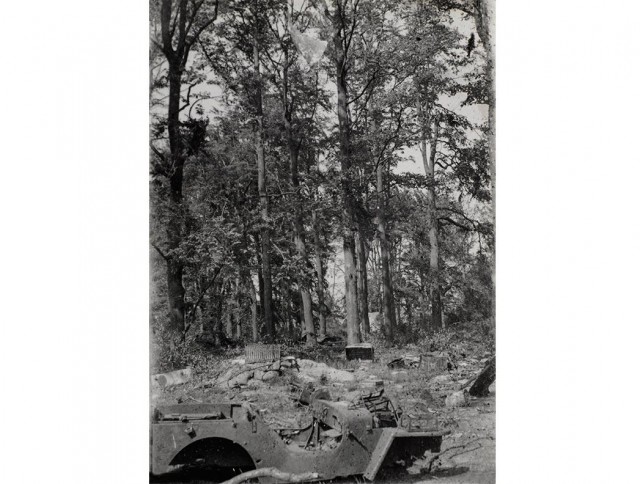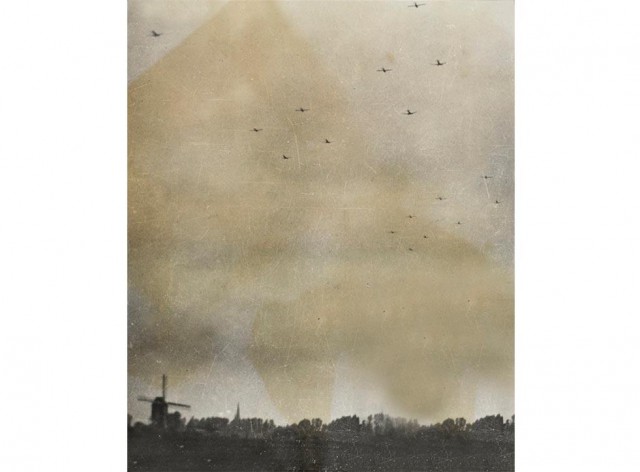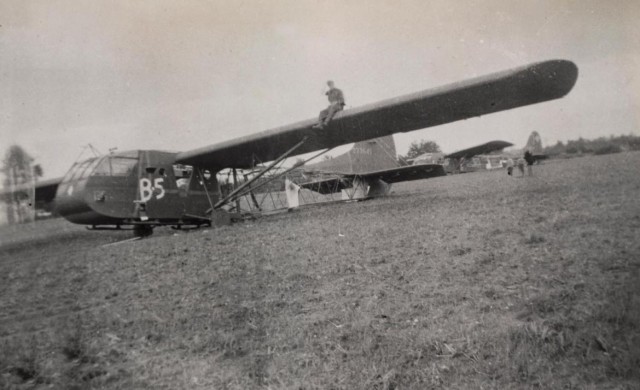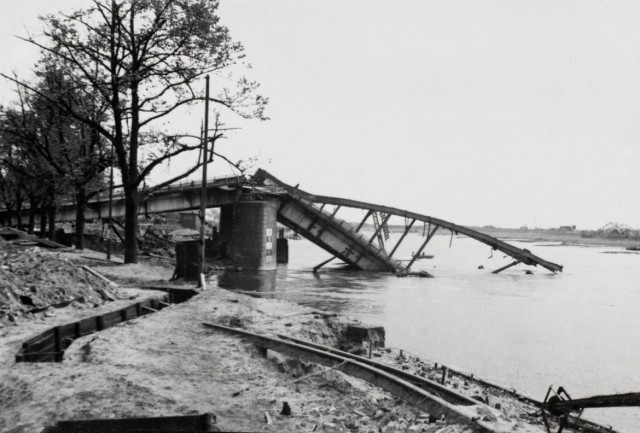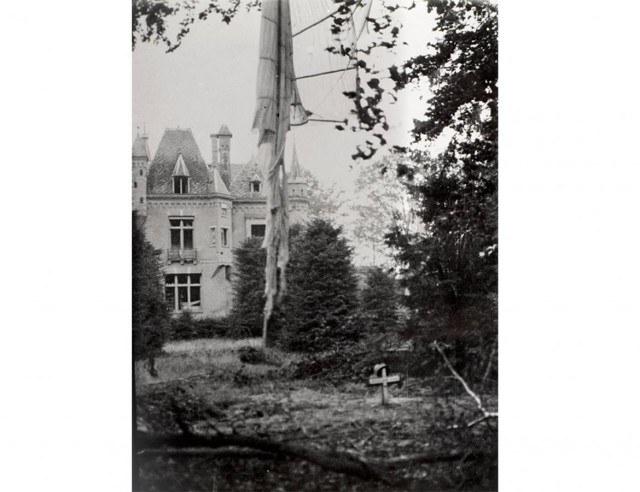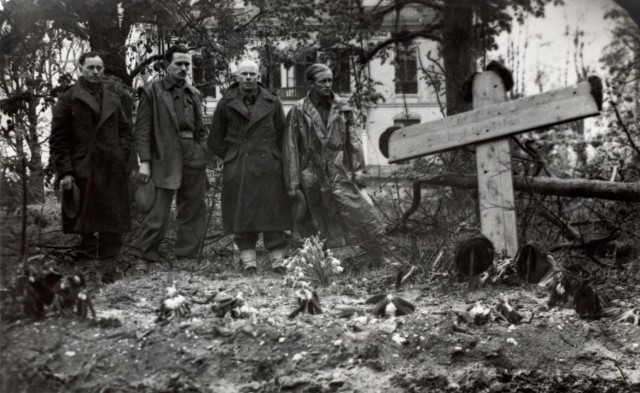While serving in WWII, Frank Tomlinson, a Royal Artillery soldier with the 74th Field Regiment, took over 1000 photos chronicling his life on the front line from 1944 to 1946. These pictures show what it was like behind enemy lines from a personal, first-hand perspective. Tomlinson’s wife, Nellie donated her husband’s album to the National Art Museum so that his work would be kept safe while being shared with the public.
The Kodak Vest Pocket Model B camera was an updated Kodak Vest Pocket Autographic model, which was popular among soldiers during WWI and became known as the ‘soldier’s camera’. The Model B version was sold from 1925-1934 and may have been chosen by Tomlinson for use during the war because of the camera’s heritage.
One of the pages in Tomlinson’s album contains notes about how he developed his pictures and reasons why some did not turn out as well as others. It also mentions information about putting the album together, how many pictures he took, and the related costs.
This map drawn by Tomlinson shows the path he and his fellow soldiers took after the war while Europe was being liberated. It shows the journey from Tilbury, England by water to Normandy, France, then through Belgium and on to the Netherlands during Operation Market Garden. It goes on to plot their path to the Rhine Valley and, finally, to Germany. Tomlinson had labelled each town they passed and the map shows a total of 62 locations.
The Restaurant Part Hotel Hartenstein shown in this picture is located just outside of Arnhem in Oosterbeek, Netherlands. The hotel was changed from a villa to a hotel in 1942. During the Battle of Arnhem, the 1s Airborne Division occupied it when they tried to take over and hold the Arnhem bridge in September 1944.
The attempt by the Allies to overtake the Maas, Lower Rhine, and Waal rivers during Operation Market Garden was so that they could get into Germany and finish the war. To slow them down, the Germans tried to keep bridges from being captured, and often demolished them. The allies maintained a large amount of supplies that could be used to rebuild bridges that needed to be fixed or rebuilt. They also had 9000 engineers and 2300 vehicles to transport the supplies.
The Bridge at Arnhem was bombed by the B-26 Marauders from the 344th Bomb group in order to keep the Germans from using it on October 7, 1944. In April 1945, they built a temporary bridge after recapturing it.
This vehicle that was destroyed in a battle is one of more than 360,000 four wheel drive American Willys Jeeps which were used as utility vehicles during the war. The jeeps were fast but unarmoured and, therefore, vulnerable.
This picture shows squadrons of Hamilcar, Airspeed Horsa and Waco gliders full of soldiers being towed by C-47 Dakota Transport aircraft. The tow cables are shown in the photo between pairs of planes. When the gliders are getting close to where they will land, they are released from the planes and try to land as close as possible to their destination. The location of this picture was most likely near Market Garden in September of 1944 in the Low Countries.
A soldier sits on the wing of a General Aircraft Limited GAL. 49 Hamilcar B5 glider, The aircraft looks like it faced a difficult landing because part of its tail fell away from the slider’s frame. Another glider is shown in the background, the Forces TV reports.
Most likely taken after the liberation of Arnhem in April 1945, this photo shows defensive trenches offshore of the river beside a fallen bridge.
This photo showed a grave of a fallen paratrooper with a helmet on the cross. Above the grave is a ruined parachute and in behind is the front of an unnamed chateau.
A grave with six berets, which probably means that six men were buried here, is honored by four British soldiers, most likely from the 1st Airborne Brigade. In the background there is a building that looks a lot like the Hartenstein Hotel in Oosterbeek, outside of Arnhem, which was held by British soldiers during the Battle of Arnhem.
